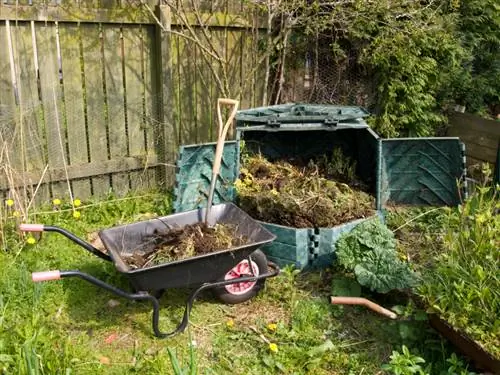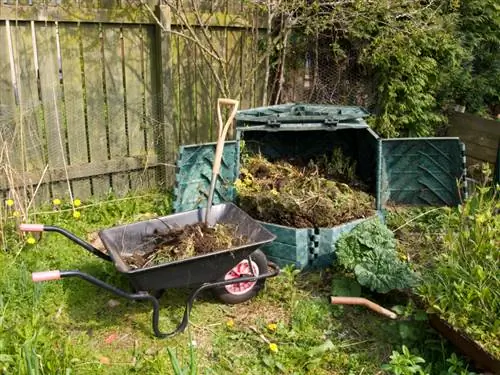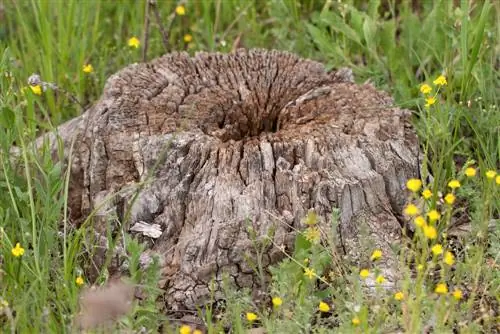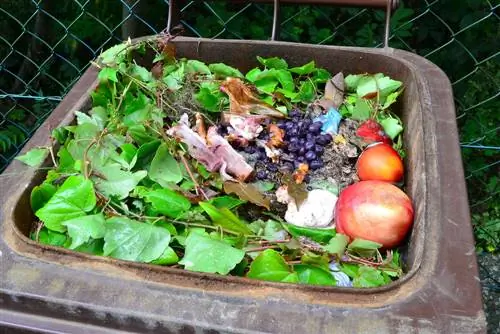- Author admin [email protected].
- Public 2023-12-16 16:46.
- Last modified 2025-01-23 11:20.
To control the growth of St. James's Ragwort, it is important to dispose of the plant correctly after digging it up or chemically destroying it. You can use various options for this.

How do you dispose of ragwort properly?
Scarfwort can be disposed of in organic waste, household waste or by incineration. In organic waste, plant parts should be stored in tightly sealed containers. Storage in plastic bags is recommended for household waste, while agricultural land can burn.
Scarfwort in organic waste
You can dispose of ragwort in organic waste without any concerns. In composting and biogas plants, all sprouting plant parts and seeds are reliably destroyed. Since the plant goes into so-called emergency maturity after cutting, i.e. the seed capsules ripen within a very short time, the herb must be stored in tightly sealed bags or containers until it is delivered to the composting facility.
Disposal with household waste
If you only have a few plants from your own garden to dispose of, you can alternatively dispose of them with household waste. It is advisable to store the torn ragwort in a tightly sealed plastic bag until you collect it from the trash can. This prevents new seeds from entering the garden.
Burn ragwort
The vegetable waste from agricultural land may be burned outside of built-up areas. In this way, the grass clippings from pastures contaminated with ragwort can be effectively destroyed so that the plant can no longer seed.
Avoid resettlement after destruction
In order for the control measures to remain successful, it is important to use mechanical measures to prevent the ragwort from colonizing again:
- Avoid gaps in the turf. After cutting out individual plants, reseed immediately.
- Don't neglect spring care of pasture areas and overseed if necessary.
- Dig up individual plants and young rosettes immediately.
- Avoid trampling damage caused by overgrazing.
- Mow at least twice a year.
Tip
Scarfwort should not be composted in garden compost. The rotting heat is not sufficient for the plant to completely decompose and the ragwort could sprout again from the remaining roots.






